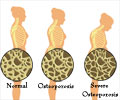An increased intake of phosphorous is linked to a higher bone mineral content and bone density, a decreased risk of high blood pressure (hypertension) by 3%,

Health Benefits of Phosphorus in your Diet
The two-part study was conducted by researchers Kristin Fulgoni, Victor Fulgoni and Taylor Wallace who found that between 1988-1994 and 2015-2016, Americans’ daily intake of natural phosphorus increased by 12% while their daily intake of added phosphorus decreased by 13%. The body uses this mineral to build strong bones and teeth, maintain a normal pH balance, deliver oxygen to tissues, convert food into energy, and much more. The top five food sources of natural phosphorus include cheese, pizza, chicken, reduced-fat milk and eggs.Currently, the average total dietary phosphorus intake for adult Americans is 1,400 milligrams per day, which is well below the Tolerable Upper Intake Level (UL) of 3,000 - 4,000 milligrams per day. Added phosphorus accounts for about 11.6% of total phosphorus intake among American adults ages 19 and over. The main contributors for added phosphorus are cheese, soft drinks, cakes, pies, cookies, and brownies.
Source-Eurekalert











